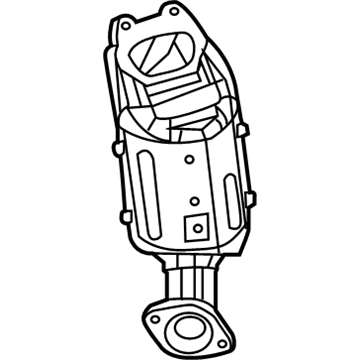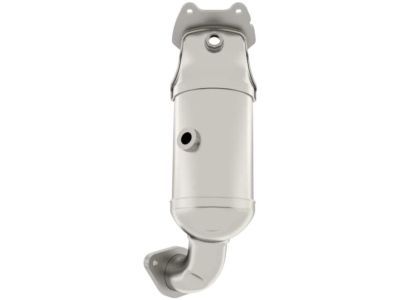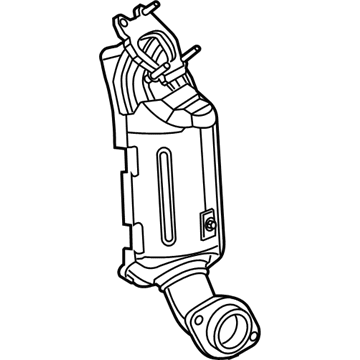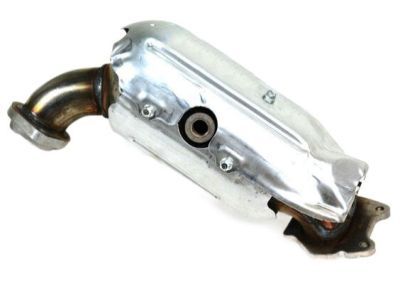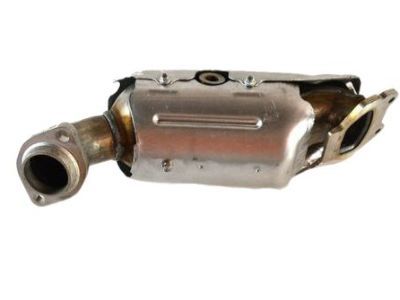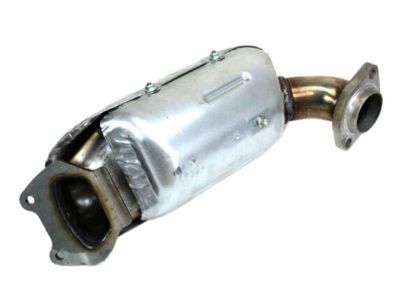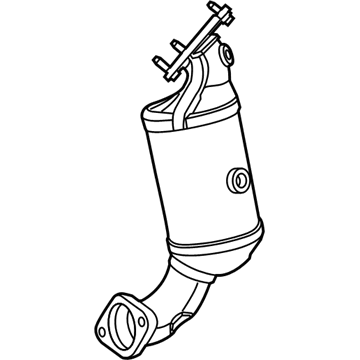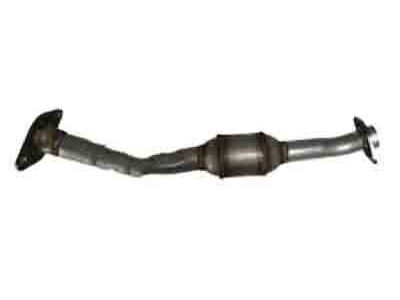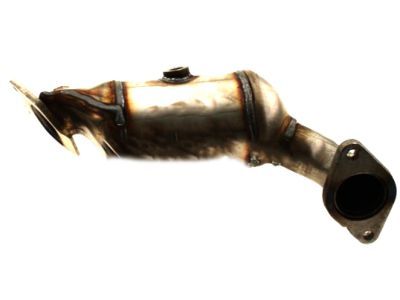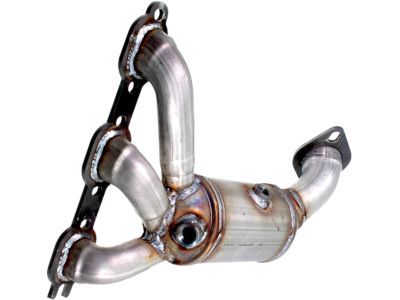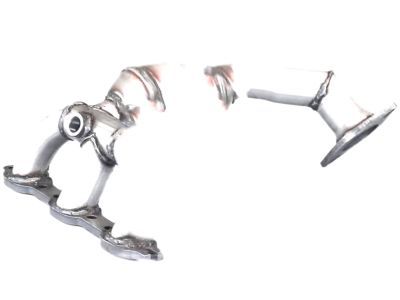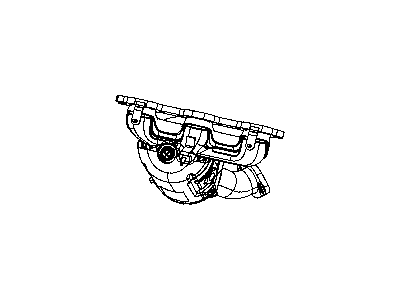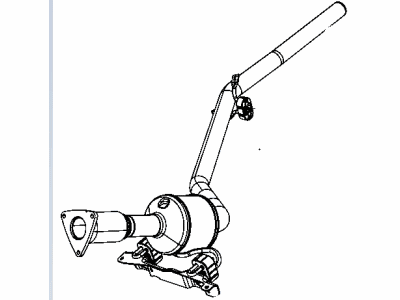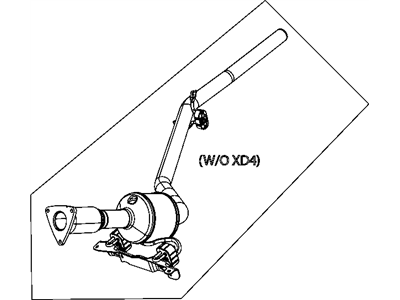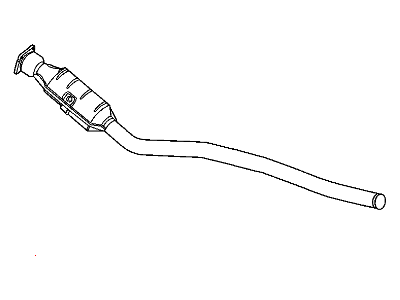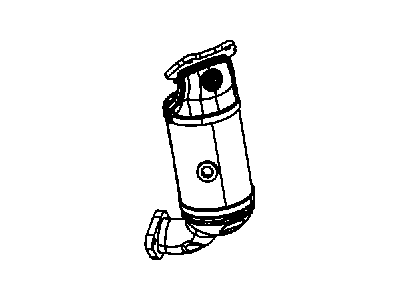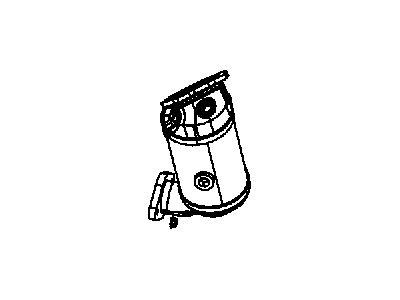
My Garage
My Account
Cart
Genuine Dodge Grand Caravan Catalytic Converter
Cat. Converter- Select Vehicle by Model
- Select Vehicle by VIN
Select Vehicle by Model
orMake
Model
Year
Select Vehicle by VIN
For the most accurate results, select vehicle by your VIN (Vehicle Identification Number).
64 Catalytic Converters found

Dodge Grand Caravan Exhaust Manifold And Catalytic Converter
Part Number: 68036151AM$1399.75 MSRP: $2080.00You Save: $680.25 (33%)
Dodge Grand Caravan Exhaust Manifold And Catalytic Converter
Part Number: 68036150AL$1416.70 MSRP: $2105.00You Save: $688.30 (33%)
Dodge Grand Caravan Exhaust Manifold And Catalytic Converter
Part Number: 68036151AL$1399.75 MSRP: $2080.00You Save: $680.25 (33%)
Dodge Grand Caravan Exhaust Manifold And Catalytic Converter
Part Number: 68036151AE$1399.75 MSRP: $2080.00You Save: $680.25 (33%)
Dodge Grand Caravan Converter-Exhaust
Part Number: 68040858AB$1863.05 MSRP: $2760.00You Save: $896.95 (33%)
Dodge Grand Caravan Converter Catalytic
Part Number: 5110150AA$2207.70 MSRP: $3265.00You Save: $1057.30 (33%)
Dodge Grand Caravan Exhaust Manifold And Catalytic Converter
Part Number: 68036151AK$1399.75 MSRP: $2080.00You Save: $680.25 (33%)
Dodge Grand Caravan Exhaust Manifold And Catalytic Converter
Part Number: 68036151AH$1399.75 MSRP: $2080.00You Save: $680.25 (33%)
Dodge Grand Caravan Exhaust Manifold And Catalytic Converter
Part Number: 68036150AK$1416.70 MSRP: $2105.00You Save: $688.30 (33%)
Dodge Grand Caravan Exhaust Manifold And Catalytic Converter
Part Number: 5171141AC$2038.20 MSRP: $3030.00You Save: $991.80 (33%)
Dodge Grand Caravan Exhaust Manifold And Catalytic Converter
Part Number: 5171140AB$2309.40 MSRP: $3425.00You Save: $1115.60 (33%)Dodge Grand Caravan Converter-Exhaust And Catalytic Conve
Part Number: 68459326AA$1789.60 MSRP: $2665.00You Save: $875.40 (33%)Dodge Grand Caravan Converter-Exhaust
Part Number: 68085280AD$5637.25 MSRP: $8310.00You Save: $2672.75 (33%)Dodge Grand Caravan Exhaust Manifold And Catalytic Converter
Part Number: 68036151AI$1399.75 MSRP: $2080.00You Save: $680.25 (33%)Dodge Grand Caravan Converter-Exhaust And Catalytic Conve
Part Number: 68459327AA$1817.85 MSRP: $2695.00You Save: $877.15 (33%)Dodge Grand Caravan Converter-Exhaust
Part Number: 4880744AI$1880.00 MSRP: $2770.00You Save: $890.00 (33%)Dodge Grand Caravan Converter-Exhaust
Part Number: 4721587AE$2733.15 MSRP: $4030.00You Save: $1296.85 (33%)Dodge Grand Caravan Catalytic Converter
Part Number: 5110133AA$3083.45 MSRP: $4565.00You Save: $1481.55 (33%)Dodge Grand Caravan Exhaust Manifold And Catalytic Converter
Part Number: 68036150AG$1416.70 MSRP: $2105.00You Save: $688.30 (33%)Dodge Grand Caravan Exhaust Manifold And Catalytic Converter
Part Number: 68036150AI$1416.70 MSRP: $2105.00You Save: $688.30 (33%)
| Page 1 of 4 |Next >
1-20 of 64 Results
Dodge Grand Caravan Catalytic Converter
The Catalytic Converter in Dodge Grand Caravan vehicles is indispensable piece of exhaust and emissions systems that is aimed to convert dangerous gases which are generated during the processes of combustion, into less dangerous. This conversion mainly takes place with CO, HC, and NOx to CO2, H2O, and N2 through converting catalytic materials, such as platinum, palladium, and rhodium. Reflecting an evolutionary process of catalytic converter designs, different styles of emissions control are in use in Dodge Grand Caravans; while the early generation vehicles used a two way type of catalytic converter, the later generation vehicles came equipped with a three-way type catalytic converter that also helped in reducing production of NOx emissions. It usually includes a honeycomb structure support for the gases and exposure of the catalyst materials; the older models may have employed the use of ceramic beads. There are performance catalytic converters, which provide high flow rates, but still have sufficient catalyst efficiency; they may be direct-fit or universal.
Looking for affordable and high-quality auto parts? Then you have already arrived at the proper online shop. We offer all Dodge Grand Caravan Catalytic Converter at great affordable prices. Moreover, all genuine Dodge Grand Caravan Catalytic Converter come with a manufacturer's warranty. In the long run, you would realize you have saved a lot of trouble and money with OEM parts from here.
Dodge Grand Caravan Catalytic Converter Parts Questions & Experts Answers
- Q: How Can I Check for a Restricted Catalytic Converter on Dodge Grand Caravan?A:Because of a Federally mandated extended warranty which covers emissions-related components such as the catalytic converter, it is recommended to check with a dealer service department before replacing the converter at your own expense. The catalytic converter is an emission control device that reduces pollutants in the exhaust gas stream. There are two types of converters: the conventional oxidation catalyst and the three-way catalyst. If you suspect the converter is malfunctioning, take the vehicle to a dealer service department or authorized emissions inspection facility for diagnosis and repair. Additionally, it is important to regularly check the converter for leaks, corrosion, dents, and other damage when the vehicle is raised for servicing of underbody components. If damage is discovered, the converter should be replaced. While catalytic converters don't break often, they can become plugged. To check for a restricted converter, you can use a vacuum gauge to diagnose the effect of a blocked exhaust on intake vacuum. By following the steps of opening the throttle until the engine speed is about 2000 rpm and then releasing the throttle quickly, you can determine if there is a restriction. If the gauge doesn't show a significant increase in reading or seems to momentarily hover around its highest reading before returning, it indicates a plugged exhaust system or converter.
Related Dodge Grand Caravan Parts
Browse by Year
2020 Catalytic Converter 2019 Catalytic Converter 2018 Catalytic Converter 2017 Catalytic Converter 2016 Catalytic Converter 2015 Catalytic Converter 2014 Catalytic Converter 2013 Catalytic Converter 2012 Catalytic Converter 2011 Catalytic Converter 2010 Catalytic Converter 2009 Catalytic Converter 2008 Catalytic Converter 2007 Catalytic Converter 2006 Catalytic Converter 2005 Catalytic Converter 2004 Catalytic Converter 2003 Catalytic Converter 2002 Catalytic Converter 2001 Catalytic Converter 2000 Catalytic Converter 1999 Catalytic Converter 1998 Catalytic Converter 1997 Catalytic Converter 1996 Catalytic Converter 1995 Catalytic Converter 1994 Catalytic Converter 1993 Catalytic Converter 1992 Catalytic Converter 1991 Catalytic Converter 1990 Catalytic Converter 1989 Catalytic Converter 1988 Catalytic Converter 1987 Catalytic Converter









